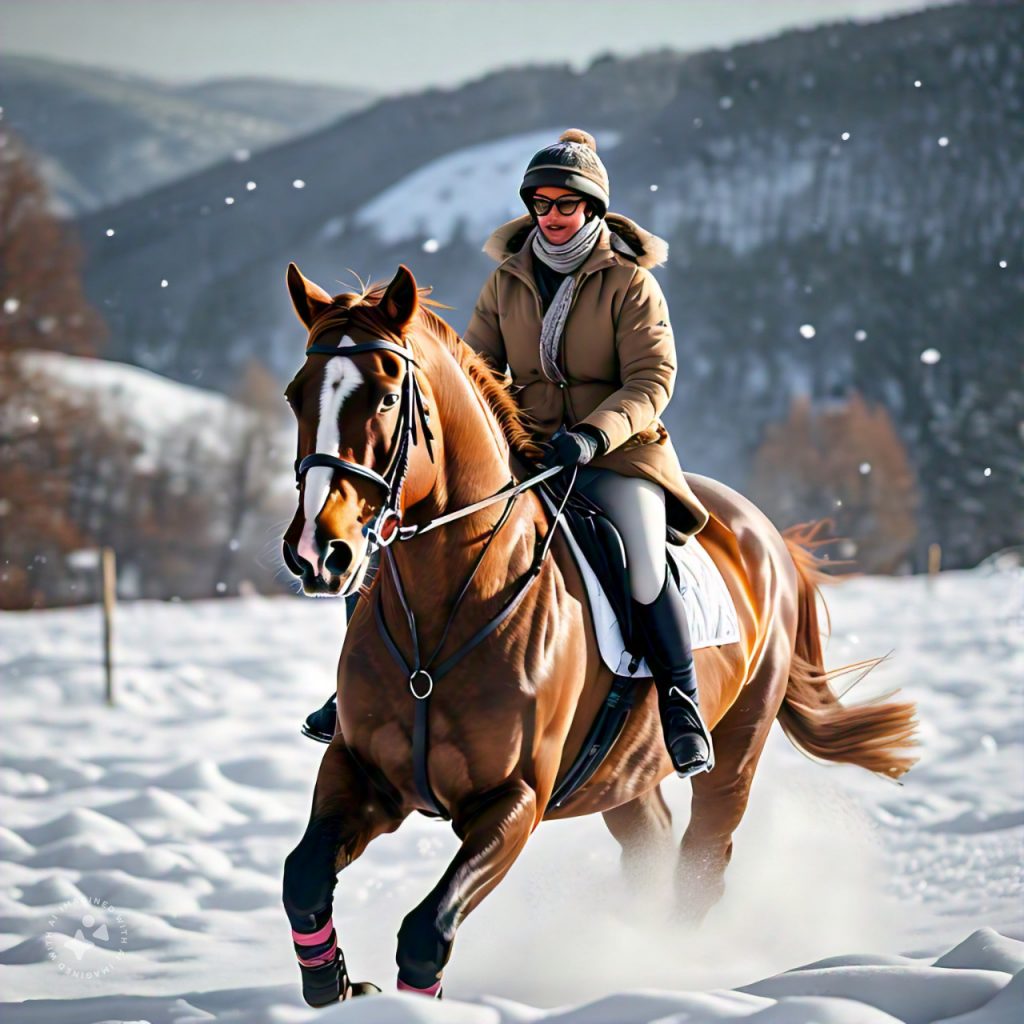As temperatures drop, horse owners often wonder: How cold is too cold to ride a horse? While many horses can tolerate cold weather better than humans, extreme cold can impact their comfort, performance, and health. Knowing when it’s safe to saddle up—and when it’s better to give your horse a rest—requires understanding key factors such as temperature, wind chill, footing, and your horse’s physical condition.
This comprehensive guide explores these considerations and provides tips for riding safely in cold weather.
Understanding a Horse’s Cold Tolerance
Horses are naturally adapted to handle colder temperatures better than humans due to their thick winter coats, insulating body fat, and efficient thermoregulation. However, their tolerance has limits.
Factors Influencing Cold Tolerance
- Age and Health:
- Older horses or those with underlying health conditions (e.g., arthritis or respiratory issues) are more sensitive to the cold.
- Young horses may lack the fat reserves or experience to cope with extreme temperatures.
- Breed and Body Type:
- Cold-adapted breeds like Icelandic horses or draft breeds tolerate lower temperatures better.
- Leaner breeds like Thoroughbreds or Arabians may struggle more in the cold.
- Acclimation:
- Horses that live in cold climates year-round are better adapted than those suddenly exposed to frigid conditions.
- Shelter and Management:
- Horses with access to adequate shelter and good nutrition handle cold better than those left in exposed conditions.
Temperature Guidelines: When Is It Too Cold?
While there isn’t a universal cutoff, there are general guidelines for safe riding temperatures.
The “Rule of Thumb”:
Add the temperature (in Fahrenheit) to the wind chill. If the combined value is below 20°F (-6°C), it may be too cold to ride safely.
Example:
If it’s 25°F with a wind chill of -10°F, the effective temperature is 15°F—likely too cold for most horses.
Consider These Cold Weather Hazards:
- Frostbite and Hypothermia:
- Rare in horses but possible in extreme cold, especially in areas like the ears or lower legs.
- Respiratory Stress:
- Horses inhale large volumes of air during exercise. Cold, dry air can irritate their respiratory system, causing coughing or discomfort.
- Frozen Footing:
- Ice or snow can create slippery, unsafe footing that increases the risk of falls and injuries.
Signs It’s Too Cold for Your Horse
- Shivering: Indicates your horse is cold and burning energy to stay warm.
- Cold Ears, Muzzle, or Legs: These extremities are good indicators of their overall warmth.
- Stiffness or Reluctance to Move: Could suggest discomfort or pain from cold or frozen footing.
- Labored Breathing or Coughing: May signal cold air irritation during exercise.
Safe Cold-Weather Riding Tips
If conditions are within safe limits and your horse appears comfortable, follow these tips to ensure a safe and enjoyable ride:
1. Prepare Your Horse
- Warm Up Gradually:
Start with a long walk to warm up muscles and joints, which are more prone to stiffness in cold weather. - Blanket Management:
Remove blankets well before riding to allow your horse’s skin and muscles to adjust to the temperature.
2. Monitor Footing
- Avoid icy or compacted snow trails. Consider using hoof boots or shoes with studs for better traction.
- Check for ice balls that may form under hooves and cause discomfort or instability.
3. Dress Your Horse Appropriately
- Use a quarter sheet or exercise blanket to keep their hindquarters warm, especially for clipped or lean horses.
- Ensure tack is not icy—warm bits before placing them in your horse’s mouth.
4. Adjust Intensity and Duration
- Keep rides shorter and less intense to avoid overtaxing your horse in cold conditions.
- Limit cantering or galloping to reduce the risk of respiratory stress.
5. Cool Down Thoroughly
- Walk your horse after riding to allow them to cool down gradually.
- Use a fleece cooler to wick away sweat and prevent chills while your horse dries.
When to Avoid Riding
Sometimes, it’s better to skip the ride and focus on groundwork or grooming instead. Avoid riding in these conditions:
- Sub-Zero Temperatures: Anything below 0°F (-18°C) is generally unsafe for both horse and rider.
- High Winds: Wind chill can make even moderate temperatures dangerously cold.
- Freezing Rain or Sleet: Wet conditions combined with cold increase the risk of hypothermia.
- Deep or Crusty Snow: Can strain tendons and joints or hide icy patches.
Alternatives to Riding in Extreme Cold
- Groundwork: Practice lunging, liberty training, or desensitization exercises.
- Grooming Sessions: A thorough grooming not only strengthens your bond but also stimulates circulation and warms muscles.
- Blanket Fitting and Maintenance: Use the downtime to clean and inspect your horse’s blankets.
FAQs About Cold Weather Riding
Q: Can I ride my horse if it’s snowing?
A: Light, fluffy snow is generally safe if the footing underneath is stable. However, avoid riding in wet, heavy snow or icy conditions.
Q: Do clipped horses need special care in the cold?
A: Yes, clipped horses lose their natural insulation and may need quarter sheets during rides and blankets in the barn.
Q: How can I tell if my horse is too cold during a ride?
A: Look for signs like shivering, cold extremities, or reluctance to move. Always monitor their behavior and comfort level.
Q: What should I do after riding in the cold?
A: Cool down gradually, dry your horse thoroughly, and ensure they have access to hay, which helps generate internal heat.
Conclusion
Determining how cold is too cold to ride a horse depends on a combination of factors, including the temperature, wind chill, footing, and your horse’s health. As a general rule, avoid riding when the effective temperature drops below 20°F, and always prioritize your horse’s safety and comfort. By following the tips outlined in this guide, you can enjoy cold-weather riding while keeping your equine companion happy and healthy.
Stay warm, ride safely, and remember: sometimes, the best decision on a frigid day is to enjoy a cozy grooming session instead.

